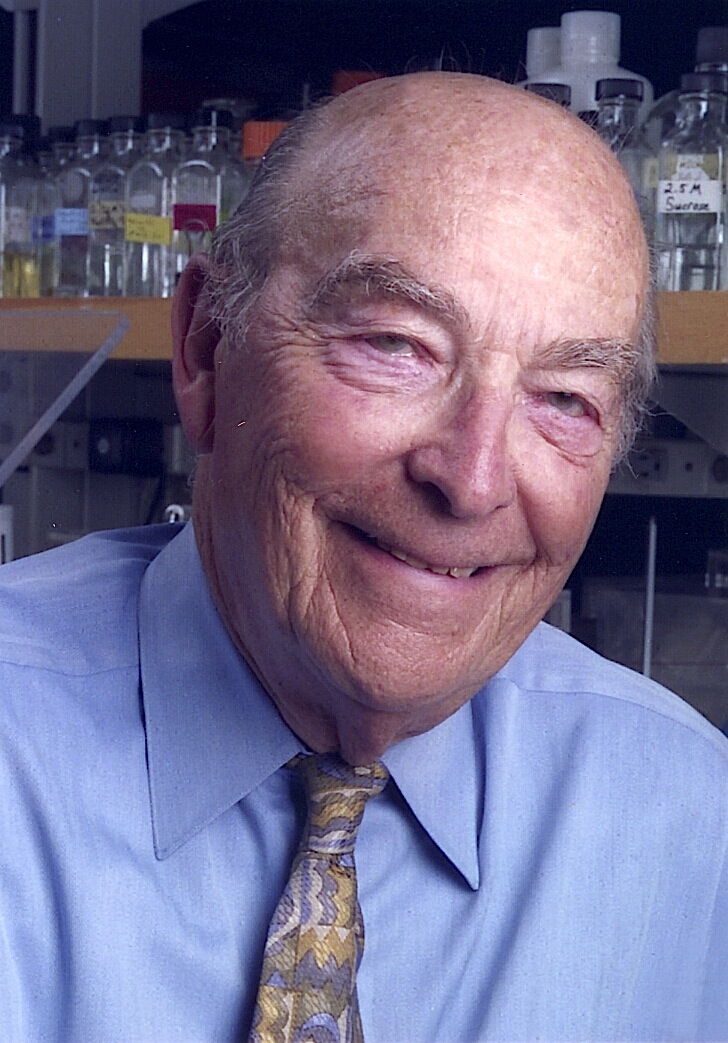| |
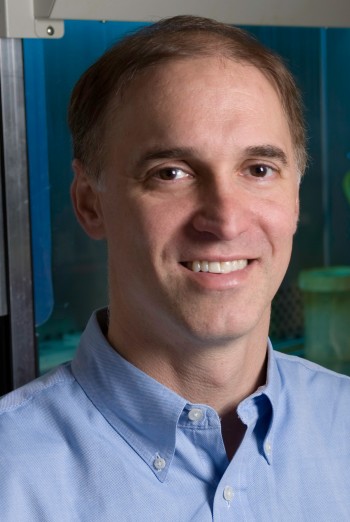 |
Steve Artandi
Professor of Medicine (Hematology) and of Biochemistry
M.D. and Ph.D. in Microbiology (Columbia University)
Joint with Department of Medicine
In the Artandi lab, we are interested in unraveling the molecular and cellular mechanisms according to which telomeres and telomerase modulate stem cell function and carcinogenesis. Telomeres, the nucleotide repeats that cap the ends of eukaryotic chromosomes, which serve critical roles in promoting cell viability and in maintaining chromosomal stability. In humans, telomeres shorten progressively with cell division in primary human culture because DNA polymerase cannot fully replicate the extreme ends of chromosomes. Critical telomere shortening and loss of the protective telomere capping
function in cell culture initiates senescence and crisis responses that profoundly alter chromosome stability, cell cycle progression and survival.
 
|
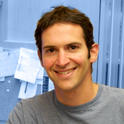 |
Onn Brandman
Assistant Professor of Biochemistry
Ph.D. in Chemical and Systems Biology (Stanford University)
The Brandman Lab studies how cells ensure protein quality and how they signal stress. To achieve this, we employ an integrated set of techniques including single cell anaysis of proteotoxic stress pathways, structural studies, in vitro translation, and full genome screens in yeast and mammalian cells.
 
|
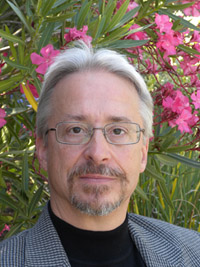 |
Phil Beachy
Professor of Biochemistry and of Developmental Biology
Ph.D. in Biochemistry (Stanford University)
Joint with Department of Developmental Biology
Phil Beachy's laboratory studies the function of Hedgehog proteins and other extracellular signals in morphogenesis, and in repair and regeneration of tissue injury. The group studies how the distribution of such signals in tissues is regulated, how cells perceive and respond to distinct concentrations of signals, and how such signaling pathways arose in evolution. The lab also studies the normal roles of such signals in the physiology of stem and progenitor cells and the abnormal roles of such signaling pathways in the formation and expansion of cancer stem cells.
 
|
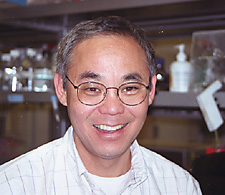 |
Gil Chu
Professor Medicine (Oncology) and of Biochemistry
M.D. (Harvard University) and Ph.D. in Physics (MIT)
Joint with Department of Medicine
Gil Chu's laboratory studies how cells respond to damaged DNA. The group focuses on pathways for the repair of UV-damaged DNA and the repair of DNA double-strand breaks induced by ionizing radiation and V(D)J recombination, the mechanism that generates immunological diversity. In the hope of improving cancer treatment and prevention, the lab uses microarrays to study transcriptional responses to DNA damage in cancer patients.
 
|
 |
Rhiju Das
Assistant Professor of Biochemistry
Ph.D. in Physics (Stanford University)
Rhiju Das's research group strives to predict how sequence codes for structure in proteins, nucleic acids, and heteropolymers whose folds have yet to be explored. The Das lab uses new computational and experimental tools to tackle the de novo modeling of protein and RNA folds, the high-throughput structure mapping of riboswitches and random RNAs, and the design of self-knotting and self-crystallizing nucleic acids.
 
|
 |
Ron Davis
Professor of Biochemistry and of Genetics
Ph.D. in Chemistr (California Institute of Technology)
Ron Davis's research group is using Saccharomyces cerevisiae and Human to conduct whole genome analysis projects. The yeast genome sequence has approximately 6,000 genes. The Davis group has made a set of haploid and diploid strains (21,000) containing a complete deletion of each gene. In order to facilitate whole genome analysis each deletion is molecularly tagged with a unique 20-mer DNA sequence. This sequence acts as a molecular bar code and makes it easy to identify the presence of each deletion.
 
|
 |
James Ferrell
Professor of Chemical and Systems Biology and of Biochemistry
M.D. and Ph.D. in Chemistry (Stanford University)
Joint with Department of Chemical and Systems Biology
The Ferrell Lab has been studying the system of regulatory proteins that drives the cell cycle, through a combination of quantitative experimental approaches, computational modeling, and the theory of nonlinear dynamics. The goal is to understand the design principles of this system, and perhaps to gain insight into the systems that drive other biological oscillations (e.g. heart beats, calcium oscillations, circadian rhythms) as well.
 
|
 |
Pehr Harbury
Associate Professor of Biochemistry
Ph.D. in Biological Chemistry (Harvard University)
The Harbury lab aims to measure and understand dynamic structural changes in proteins, and their role in the functional biology of macromolecular machines. We are developing tools to determine 3D protein structures and to detect structural fluctuations in situ: directly inside cells and in complex reconstituted systems. A second objective is to genetically map chemical space and exploit it for the discovery of tailored small molecules. We have created a technology that reenacts billions of years of natural product evolution in a test tube. More generally, we explore innovative experimental approaches to problems in molecular biochemistry, focusing on technologies with the potential for broad impact.
 
|
 |
Dan Herschlag
Professor of Biochemistry and, by courtesy, of Chemistry and of Chemical Engineering
Ph.D. in Biochemistry (Brandeis University)
The Herschlag group's research is aimed at understanding the chemical and physical behavior underlying biological macromolecules and systems, as these behaviors define the capabilities and limitations of biology. Toward this end the lab studies folding and catalysis by RNA, as well as catalysis by protein enzymes. The research has broad implications for evolution of proteins and RNA, and for the behavior of RNA molecules in the cellular milieu.
 
|
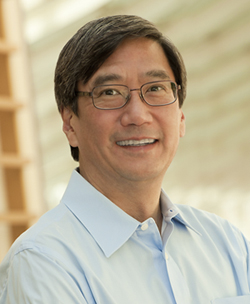
|
Peter Kim
Professor of Biochemistry
Ph.D. in Biochemistry (Stanford University)
We are studying the mechanism of viral membrane fusion and its inhibition by drugs and antibodies. We use the HIV envelope protein (gp120/gp41) as a model system. Some of our studies are aimed at creating an HIV vaccine that elicits antibodies against a transient, but vulnerable, intermediate in the membrane-fusion process, called the pre-hairpin intermediate.
We are also interested in protein surfaces that are referred to as “non-druggable”. These surfaces are defined empirically based on failure to identify small, drug-like molecules that bind to them with high affinity and specificity. Some of our efforts are aimed at characterizing select non-druggable targets. We are also interested in developing methods to identify ligands for non-druggable protein surfaces.
 
|
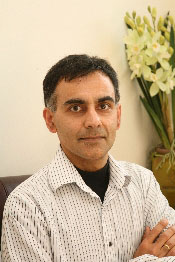 |
Chaitan Khosla
Professor of Chemical Engineering and of Chemistry and, by Courtesy, of Biochemistry
Ph.D. (California Institute of Technology)
Joint with Department of Chemical Engineering
Research interests in the Khosla Laboratory lie at the interface of chemistry and medicine. For the past several years, the lab has investigated the catalytic mechanisms of modular megasynthases such as polyketides synthases, with the concomitant of harnessing their programmable chemistry for preparing new antibiotics. More recently, the group has investigated the pathogenesis of celiac sprue, an HLA-DQ2 associated autoimmune disease of the small intestine.
 
|
 |
Mark Krasnow
Professor of Biochemistry
M.D. and Ph.D. in Biochemsistry (University of Chicago)
Genetic and molecular basis of respiratory system development, maintenance, and disease in Drosophila, mouse, and human.
 
|
 |
Sharon Long
Professor in Biological Sciences and, by courtesy, of Biochemistry
Ph.D. in Cell and Developmental Biology (Yale University)
Joint with Department of Biology
The Long Laboratory studies the early stages of symbiosis between Rhizobium (also Sinorhizobium) meliloti and and its host plants in the genus Medicago. The symbiosis is uniquely approachable by experiment because each partner can be genetically manipulated, and transgenic organs can be constructed, allowing highly specific genetic tests of various components of signal and response. The lab uses genetics, biochemistry and cell biological approaches to study how cell division, growth, and gene expression arise in each partner due to stimulation from the other.
 
|
 |
Suzanne Pfeffer
Professor and Chairman of Biochemistry
Ph.D. in Biochemistry (U.C. San Francisco)
The goal of research in the Pfeffer Lab is to elucidate the molecular mechanisms by which proteins are targeted to specific membrane compartments. How do transport vesicles select their contents, bud, translocate through the cytoplasm, and then fuse with their targets? The Pfeffer Lab studies the Ras-like Rab GTPases--how they are localized to distinct intracellular compartments in human cells, and how they serve as master regulators of all receptor trafficking events.
 
|
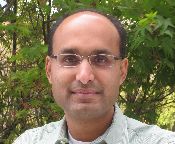 |
Rajat Rohatgi
Assistant Professor of Biochemistry and of Medicine (Oncology)
M.D. and Ph.D. in Cell Biology (Harvard University)
Joint with Department of Medicine
The Rohatgi Lab is working to elucidate the biochemical and cell biological principles that govern signaling pathways that sit at the intersection between developmental biology and cancer. Their toolkit combines bulk biochemical techniques, such as cell-free reconstitution, witih microscopy using novel optical probes to study the dynamics of signal propagation in cells. The group strives to develop novel strategies for the manipulation of these pathways for cancer therapies and applications in regenerative medicine.
 
|
 |
Julia Salzman
Assistant Professor of Biochemistry
Ph.D. in Statistics (Stanford University)
Joint with Stanford Cancer Institute
Our goal is to develop statistical and experimental tools to construct a high dimensional picture of gene regulation, including cis and trans control of the full repertoire of RNAs expressed by cells. Currently, we are studying the function and biogenesis of circular RNA, which we recently discovered to be a ubiquitous and uncharacterized component of eukaryotic gene expression. A second major goal is to study gene expression variation in human cancer. Using massive public datasets and primary tumors, we develop new bioinformatic and statistical tools and test models. We use the cancer genome as window into functional roles played by RNA, and are attempting to characterize potential biomarkers.
 
|

|
James Spudich
Professor of Biochemistry
Ph.D. in Biochemistry (Stanford University)
The general research interest of The Spudich Group is the molecular basis of cell motility. the lab has three specific research interests, the molecular basis of energy transduction that leads to ATP-driven myosin movement on actin, the biochemical basis of the regulation of actin and myosin interaction and their assembly states, and the roles these proteins play in vivo, in cell movement and changes in cell shape.
 
|
 |
Aaron Straight
Associate Professor of Biochemistry
Ph.D. in Biochemistry (U.C. San Francisco)
The Straight Group studies the process of cell division in eukaryotes focusing on the mechanisms of chromosome segregation. Their research utilizes biophysical, biochemical, microscopic and cell biological approaches in systems ranging from yeasts and flies to frogs and humans. Their goal is to understand, at a molecular level, the principles of chromosome organization and segregation that ensure genome stability during cell division and differentiation.
 
|
 |
Julie Theriot
Professor of Biochemistry and of Microbiology and Immunology
Ph.D. in Cell Biology (U.C. San Francisco)
The Theriot group studies the interactions between infectious bacteria and the human host cell actin cytoskeleton. Listeria monocytogenes and Shigella flexneri are unrelated food-borne bacterial pathogens that share a common mechanism of invasion and actin-dependent intercellular spread in epithelial cells. The lab's studies fall into three broad areas: the biochemical basis of actin-based motility by these bacteria; the biophysical mechanism of force generation; and the evolutionary origin of pathogenesis.
  |

|
Ellen Yeh
Assistant Professor of Biochemistry, of Pathology and of Microbiology and Immunology
M.D. and Ph.D. in Biophysics (Harvard University)
Joint with Department of Pathology
My research focuses on the apicoplast, a prokaryotically-derived plastid organelle unique to Plasmodium (and other pathogenic Apicomplexa parasites) and a key anti-malarial drug target. My laboratory's goal is to elucidate apicoplast biology, function, and role in pathogenesis with the ultimate goal of realizing the potential of the apicoplast as a therapeutic target.
 
|
|
|
| |
|
































